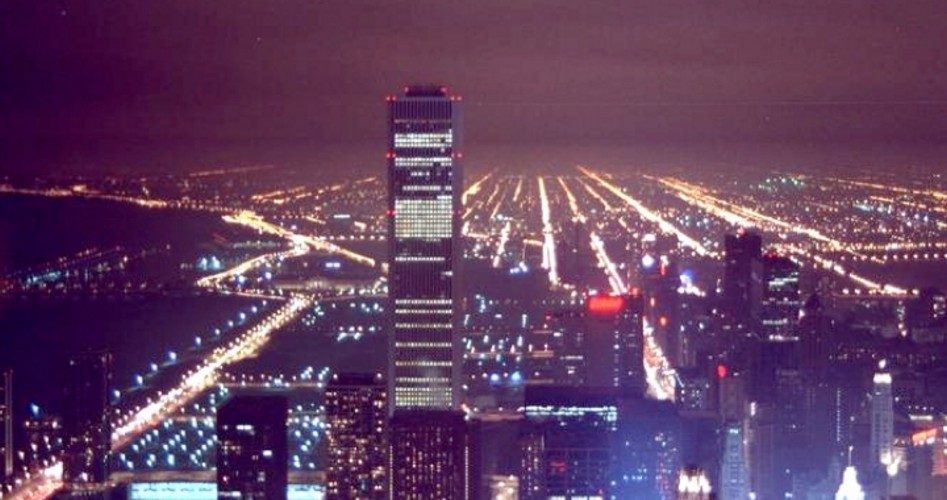
The number of murders in Chicago is on track to exceed last year’s number by at least 16 percent, crime data show.
Some weekends in the City With the Big Shoulders are violent to the extreme, with as many as 10 murders and dozens of shootings.
Chicago is on track to reach 504 murders, or about 42 murders per month if the trend continues through 2012. By June of this year, the New York Times reported last month, the city’s number of murders had jumped 39 percent over what they were last year at the same time.
The 2012 Figures
According to RedEyeChicago.com, which tracks the monthly number of murders, 294 persons have been murdered as of July 23. Thus far in July, 37 have been murdered.
Starting with 40 murders in January, the numbers fluctuated but barely dipped below one murder per day, with 28 in February, 50 in March, 41 in April, 51 in May, and 47 in June.
In June, the New York Times reported that Chicago’s violence is increasing, and described the first chore of leftist Mayor Rahm Emanuel each morning: “Mayor Rahm Emanuel’s first reading material each morning, at 5:30, is not a budget update, a legislative proposal or a packet of headlines.”
It is an e-mail from the Chicago Police Department listing the crimes that were committed during the night that just ended. By 7 a.m., he is calling Garry F. McCarthy, the police superintendent. That is unlikely to be their final conversation of the day, or even of the morning.
The Times delivered the grim news in paragraph two: “Homicides are up by 38 percent from a year ago, and shootings have increased as well, even as killings have held steady or dropped in New York, Los Angeles and some other cities. As of June 17, 240 people had been killed here this year, mostly in shootings, 66 more deaths than occurred in the same period in 2011” the newspaper reported.
Despite the numbers, the Times noted, murders have “dropped precipitously in Chicago since the 1990s.”
In 1991, Chicago Police data show, 943 persons were murdered, up 1.6 percent from 1990. That’s 2.58 murders per day. From there, the city seemed to stanch some of the bloodshed. The number of murders dropped to 855 the next year, but rose again nearly 9 percent to 931 in 1994. The number of murders dropped to a more manageable 633 in 2000 (less than two murders per day), rising to 667 in 2001. By 2007, the number had dropped to 448, rising to 513 in 2008 and landing at 433 in 2011.
Chicago is a dangerous place. At least one person a day is murdered.
Taking note of the drop in murders over the years, the Times detailed trends in other major cities. “Homicides are down so far this year in New York and in Los Angeles, a fact that Mayor Michael R. Bloomberg’s administration in New York has pointed to in defense of that city’s controversial stop-and-frisk program,” the newspaper reported.
But Chicago is not alone among major cities dealing with more killings. In Philadelphia, for instance, 173 homicides were reported as of June 20, compared with 143 in the same period last year.
Weekends Of Mayhem, Blacks Are Dying
During the past year, murderous violence swept over the city in waves of shocking brutality. On Friday and Saturday, the Chicago Tribune reported, three were killed and 22 shot in gunfire across the city. The article describes a veritable war zone. The newspapers and television stations have become diaries of murder, bloodshed, and violence, most of it gang related.
Before last weekend, the body count was at least 42 dead and 188 wounded just for July 4 and five other weekends of gunfire from February through May.
Aside from turning Chicago into a charnel house, the gunplay also affects one group more than any other: blacks.
According to the Chicago Tribune, “Violent crime has long afflicted minorities in Chicago at a much higher rate than the rest of the population, and the spike in homicides in the first half of this year provides an especially stark measure: 201 of the 259 homicide victims were African-American.”
While blacks make up about 33 percent of the city’s population, they accounted for nearly 78 percent of the homicide victims through the first six months of 2012.
By comparison, just 11 homicide victims in the first six months of the year were white, and 44 were Hispanic, according to police data.
The newspaper reported that most violent crime occurs in black neighborhoods, and that “a majority of both homicide victims and offenders are young black men with criminal records. With one exception, African-Americans have made up more than 70 percent of homicide victims in Chicago every year for the last two decades.”
The newspaper also reported that about 75 percent of the victims were boys or men aged 15 to 35, and that 143 of the victims were gang members or had gang affiliations. And 133 of those had arrest records.
Of the 44 Hispanic victims, 27 were males ages 15 to 35 and had arrest histories, according to the data. Three of the 11 white victims were males in that age range with arrest histories.
Data Nothing New
The data from Chicago reprise what libertarian columnist Walter Williams, who writes frequently about race and crime, disclosed about crime in black communities: blacks suffer the most.
In his column entitled “Should Black People Tolerate This,” Williams, a black man, reprised the grim numbers, noting that life in a major American city is more dangerous for a young black man than a tour of duty in Iraq or Afghanistan.
“Each year, roughly 7,000 blacks are murdered,” he wrote.
Ninety-four percent of the time, the murderer is another black person. According to the Bureau of Justice Statistics, between 1976 and 2011, there were 279,384 black murder victims. Using the 94 percent figure means that 262,621 were murdered by other blacks. Though blacks are 13 percent of the nation’s population, they account for more than 50 percent of homicide victims. Nationally, black homicide victimization rate is six times that of whites, and in some cities, it’s 22 times that of whites. Coupled with being most of the nation’s homicide victims, blacks are most of the victims of violent personal crimes, such as assault and robbery.
Williams also denounced the silence of so-called civil rights leaders, who refuse to discuss the problem. He also criticized them for their “silence and concealment about black racist attacks” on whites and Asians, citing the “attacks on two Virginian-Pilot newspaper reporters set upon and beaten by a mob of young blacks.”
The story wasn’t even covered by their own newspaper. In March, a black mob assaulted, knocked unconscious, disrobed and robbed a white tourist in downtown Baltimore. Black mobs have roamed the streets of Denver, Chicago, Philadelphia, New York, Cleveland, Washington, Los Angeles and other cities, making unprovoked attacks on whites and running off with their belongings.
Racist attacks have been against not only whites but also Asians.
Williams hammered black leaders from President Obama on down for “racial demogoguery.”
Williams is obviously correct. Blacks are exploited by other blacks and liberal politicians to build political power; blacks are treated as a “victim group” to get them to buy into a political ideology; blacks have been the victims of political policies that demean them and keep them poor; blacks are victims of crime from other blacks because of the societal rot engendered by these liberal policies. And if the same thing happened to any other race, would things be any different? If whites were led to believe they were being held down by another more populous race and laws were put into place, such as welfare laws that pay more to women who have children but no husband, that had the function of destroying two-parent families, morality, and work ethic, wouldn’t whites be where blacks are now? The answer is obviously yes.



